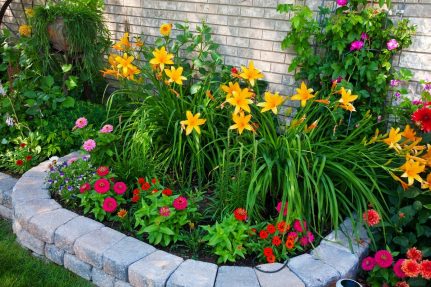The most catchy, colorful look of those indoor and outdoor plants that come from warm tropics and subtropics. It is to these flowers that zephyranthes belongs, the care of which at home and in the garden is not so complicated.
Material Content:
Description of species and varieties
To date, about 100 species of this flowering plant, which have a diverse color, have been bred.
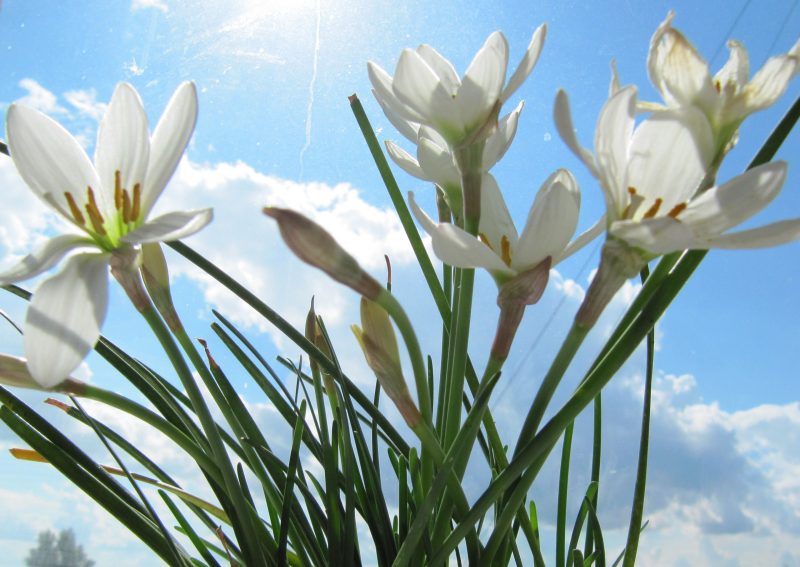
- Zephyranthes Atamas. This species belongs to white flowers. The bulb reaches 2.5 cm in diameter. The leaves of the flower are very narrow and long, usually about 6. The peduncle of the species reaches 25 cm, and the snow-white flower in diameter is 4 cm.
- Zephyranthes white. This variety is distinguished by a rather late flowering, which occurs in the second decade of autumn. The flower bulb reaches 3 cm in diameter and foliage about 30 cm long. The flowers resemble crocus in shape and reach 6 cm in diameter.
- Zephyranthes is golden. This species belongs to yellow-flowered varieties. Its flowering occurs in the winter. Leaves reach 30 cm in length. The flower is painted in a pleasant golden color.
- Zephyranthes is large-flowered. This plant blooms very early and you can even try to plant it on a flower bed in warm regions. The diameter of the bulb reaches 3 cm, foliage - up to 30 cm. Petals are lanceolate and painted in reddish pink.
- Zephyranthes pink. Belongs to pink-colored varieties. The leaves are very shiny and very dark. An interesting feature of the plant is that the leaves grow only after the formation of flowers.Zephyranthes robustus, so beloved by our gardeners, belongs to pink-colored varieties.
These are the most popular varieties for home and garden floriculture. All of them are quite unpretentious, but nevertheless, some rules of care will have to be strictly observed in order to achieve magnificent and prolonged flowering from the plant.
Preparations before boarding
Zephyranthes flower is a very thermophilic plant; therefore, it is most often planted in the garden only for warm weather. Preparation for planting is extremely important, because the abundance and duration of flowering depends on this.
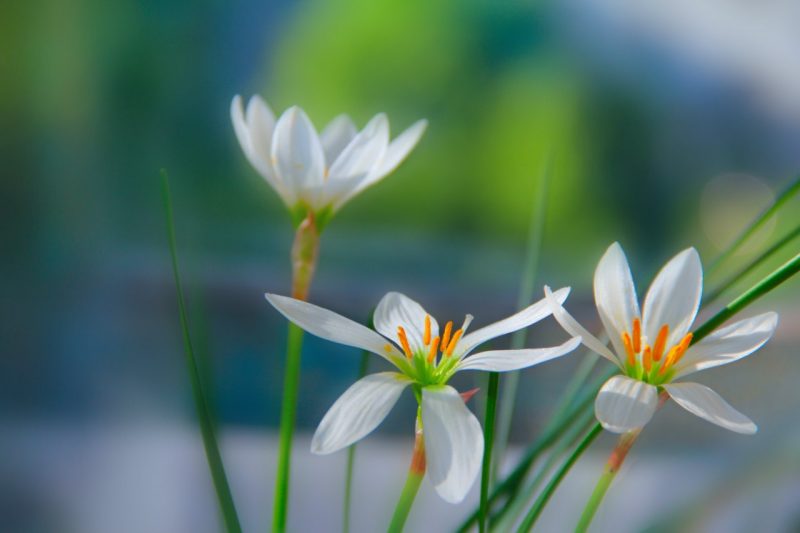
In warm regions, it is recommended to cultivate large-flowered and pink marshmallows in open ground, since these species are distinguished by early flower formation.
It is very important to find high-quality, necessarily healthy, planting material. Overgrown bulbs are often sold in gardening stores, which can begin to sprout and then bloom only after a couple of years. It is advisable to purchase plants that are planted in separate pots.
Seat selection
Both at home and in an open flowerbed, plants are planted in nutritious, rich soil. It is advisable to place the bulbs on a certain elevation so that there is no stagnation of water near them.

This flower grows well in places open to the sun. Lack of sunlight can prevent the plant from blooming.
Planting Zephyranthes in the open ground
Bulbs are planted in the flower garden with the beginning of summer.
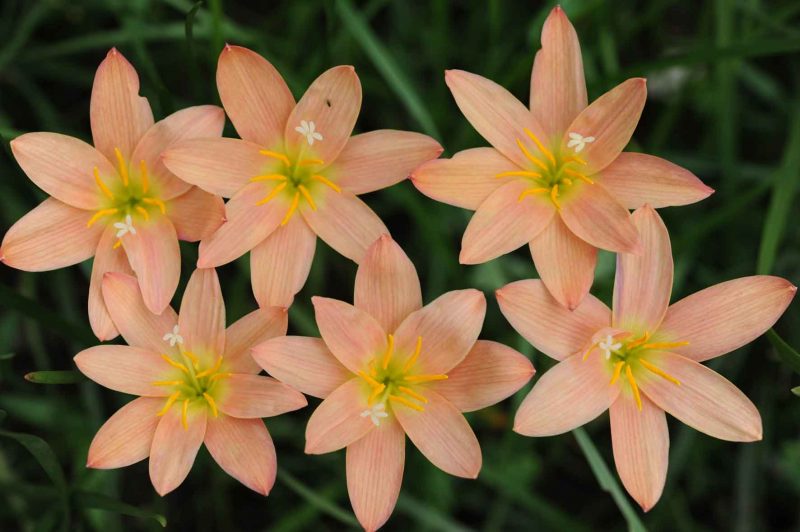
- The selected area is dug up on a bayonet to enrich the soil with oxygen and make the soil loose.
- Bulbs are planted in prepared holes so that only a thin flower neck remains at the soil level.
- After planting, the bulbs are abundantly shed with water, and so that the soil remains moist longer, the bed is slightly mulched. As mulch, you can use mowed grass.
- As soon as the bulbs begin to germinate, the mulch is removed.
Read also:care for adeniums at home
Secrets and nuances of plant care on the site
Only in moist soil will the bulbs begin to sprout, so regular irrigation is so important. You need to water the plant often, avoiding the drying out of the soil.
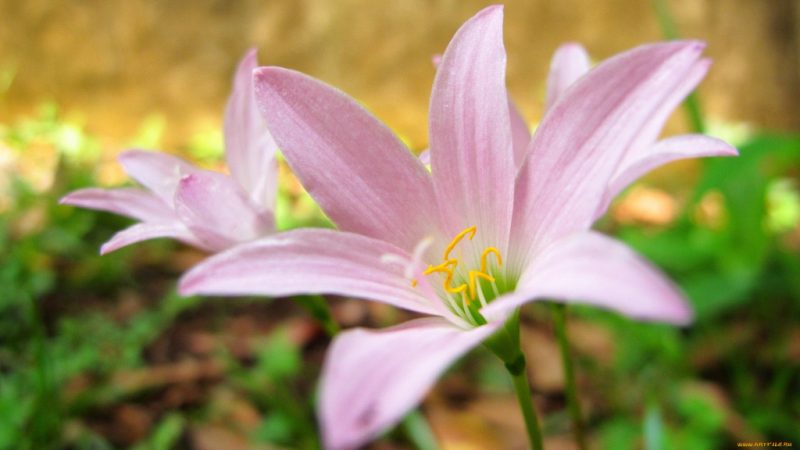
To do this, use warm water, which is well settled.
In order for the plant to be strong and bloom profusely, fertilizers must be applied on time. Complex mineral compositions for flowering garden plants will fit perfectly.
Fertilizers should only be used when flowering begins!
When the plant fades and only leaves remain, it is time to harvest the bulbs that need to be stored.
- Dig up zephyranthes in the fall.
- Bulbs are removed along with leaves and laid out to dry under a canopy.
- After drying, they are cleaned.
- Raw materials are stored in a wooden container, sprinkled with sawdust. The material lies perfectly in the room all winter.
Care and cultivation of marshmallows at home
In indoor conditions, the flower needs minimal attention.

- It is best to place flowerpots with a plant on the east window. Indoor zephyrantes is undemanding to lighting, but it can also not accept the shade.
- For growing in the house, you can use any soil for flowers. The main thing is that he should not be sour.
- Potted indoor marshmallows are often watered. It is necessary to ensure that the earthen lump in the pot is always wet, otherwise the flower may die.
- Zephyrantes gratefully respond to spraying, although this procedure is not mandatory. Once a week you can buy a flower under a cold shower.
In the same way as when growing in the garden, in the autumn, onions are dug up, dried and stored all winter in the room. In the spring they are planted in a wide pot and watered abundantly.
Common breeding methods
There are two ways to propagate a plant: by children or by seeds.
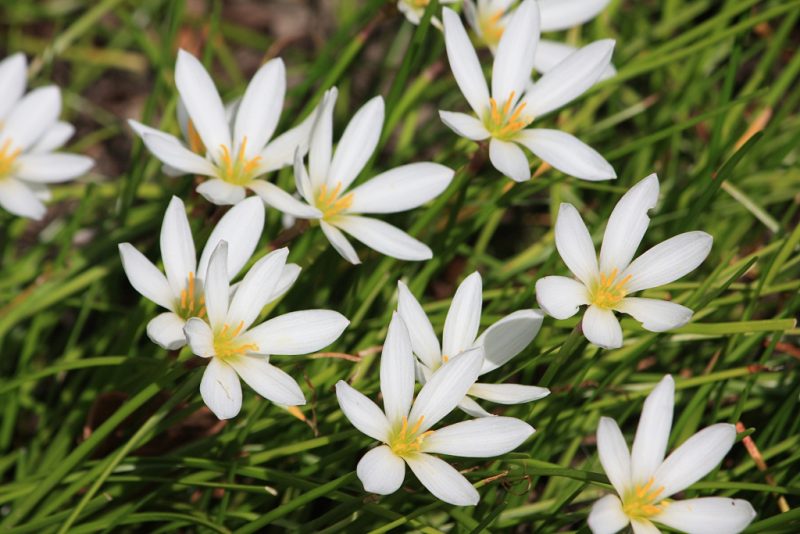
- The seed method is very laborious, and is usually used by breeders.When digging bulbs, you can find many children, which are much easier to propagate the flower.
- Children are separated from the mother's bulbs, dried and stored all winter. If you plant them correctly in the ground, then young plants will bloom the next year.
Pest and Disease Control
The flower is quite resistant to the appearance of diseases and insect pests, but still some problems may arise.
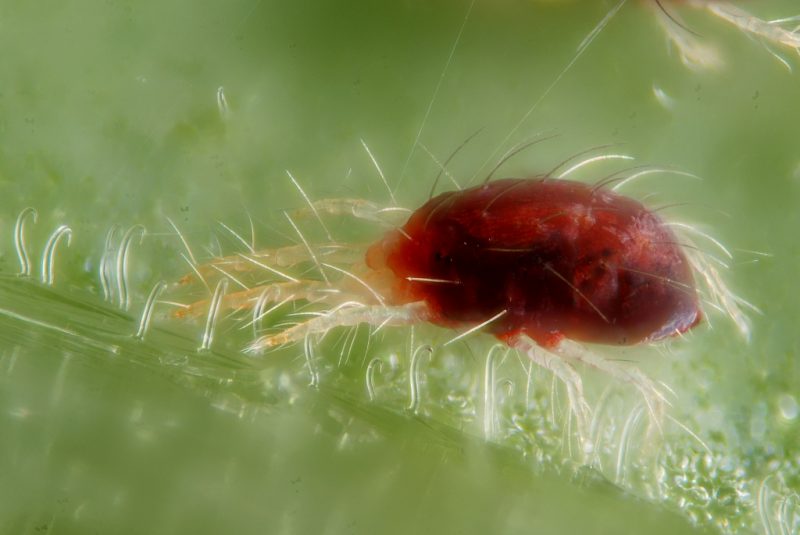
- For example, on a zephyranthes, a spider mite often grows, winding a thin cobweb between the leaves. To get rid of it, the flower is sprayed with a solution of laundry soap, but this can only be done with a small pest damage. If there are a lot of insects, then the plant is treated with Actellic, diluting 2 ml of the product in 1 liter of water.
- It happens that under the scales of the bulbs a worm multiplies, which leads to the death of the flower. To cope with this pest, you need to pour the flower with an insecticide, diluting 2 ml of the product in 1 liter of water. Affected bulbs should be removed.
- If brownish growths appeared on the flower, then scabies settled on it. As a result of the attack of this pest, the leaves begin to fall, and the flowers do not open. You can get rid of guards by spraying the Actellic plant.
- Of the diseases, Zephyranthes rot most often affects, which happens due to excessive watering. If the bulbs begin to rot, they should be dug up, discarded spoiled, and healthy transplanted into clean soil in a new pot.
Zephyranthes in landscape design
This plant looks great in wide street pots, can become the main decoration of a rockery or an alpine hill. In the garden, some varieties can be planted in light partial shade. Zephyranthes look great in groups in the foreground of flower beds or along garden paths.


